How Long Can Carrots Stay in the Ground
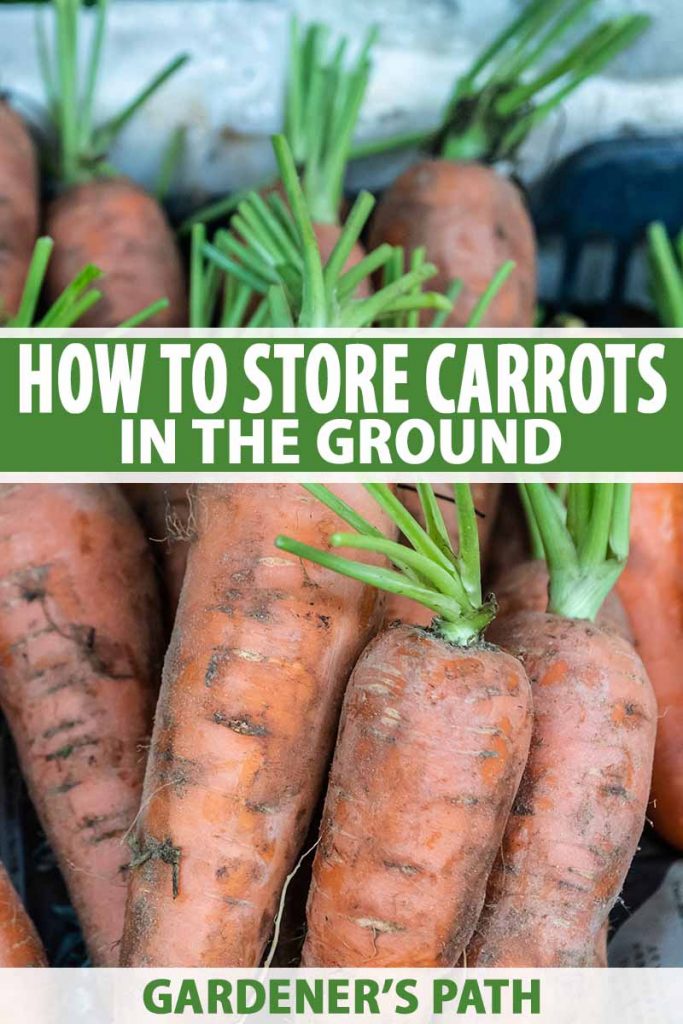
You've harvested the last of your squash, beans, and tomatoes. And now you are intelligent about your more cold hardy crops. You may have heard that you can store carrots in the ground over wintertime – and perhaps you could use some pointers connected how best to do this.
While keeping them in the garden ISN't the only path to salt away this crop, information technology is a useable method for those of us with cold winters who are low happening cool-storage place. And if you've followed our channelize to flourishing carrots, you'll more than likely have a abundant trim by now!
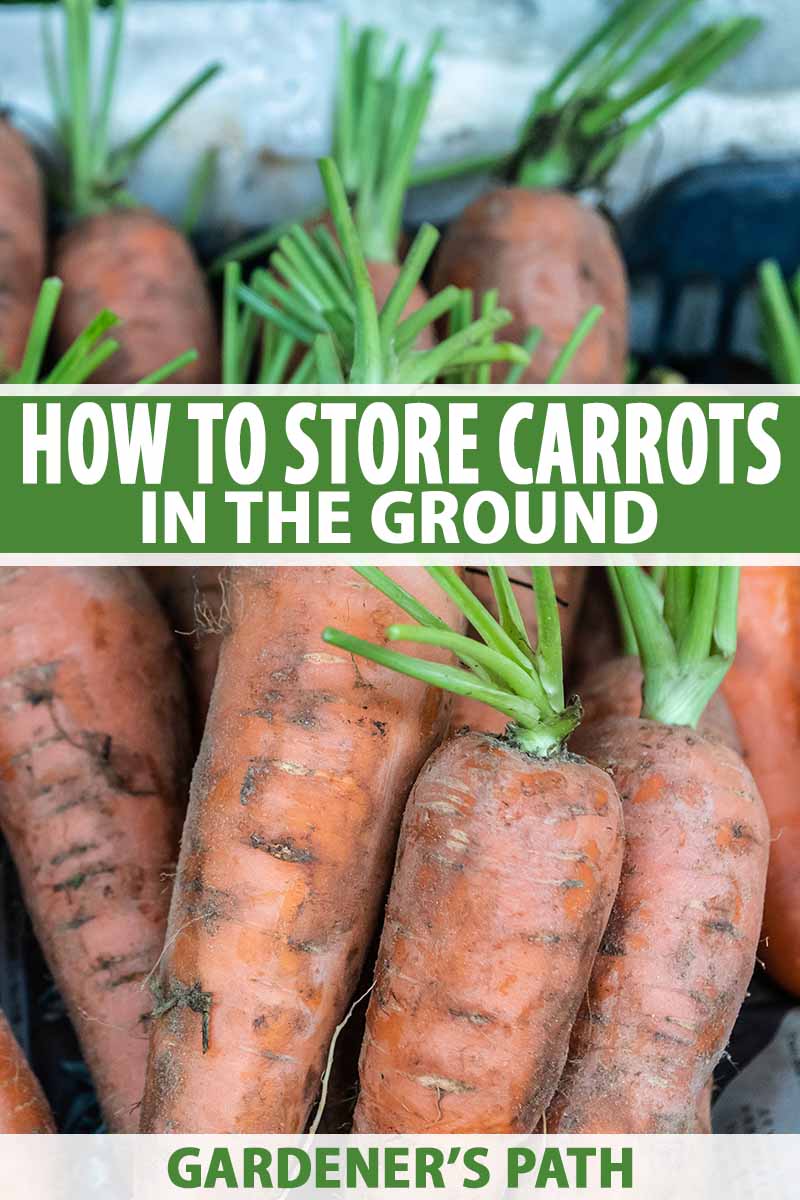
We contact to vendors to help you find relevant products. If you buy from united of our golf links, we may earn a mission .
Afterwards all, ideal computer memory for your carrot harvest involves covering them with sand and storing them at 32-40°F with a congenator humidity of 90-95%.
If these recommended conditions sound an awful lot like what's going on in your garden soil during the wintertime, it may make good mother wit for you to leave this rootage vegetable in the ground until you need it.
In this article, we'll beat to the ascendant of storing carrots in this manner. Here's what we'll cover:
What You'll Learn
- This Method Is Non For You If…
- When to Put Your Crop to Bed
- Soft touch Your Browse
- Trim the Tops Off
- Cover Your Roots
- Can IT Be Too Cold for Footing Repositing?
- When to Crop
This Method Is Not for You If…
In some cases, storing this pull vegetable in the garden through the winter Crataegus oxycantha not be advisable. I'll bring through you whatsoever time by departure o'er those cases first.
You may want to harvest your carrots as an alternative of leaving them in the garden if:
- Your winter soil temperatures do not stay beneath 40°F – IT inevitably to be cold sufficiency to stop complete ontogenesis.
- Your winters are selfsame rainy, or your soil is non well-draining – in these cases your crop may rot in the basis.
- Your area is prone to Daucus carota sativa rust flies – this pest will thrive if roots are left over in the soil over winter.
- You have planted a variety that is not designed for overwinter storage, such as a coreless cultivar.
If storing this seed-like in the undercoat turns down not to be the superior method for your situation, glean your carrots and continue them in your fridge, a settle basement, or a cool basement. And put on't forget these other things to do in the garden in front winter.
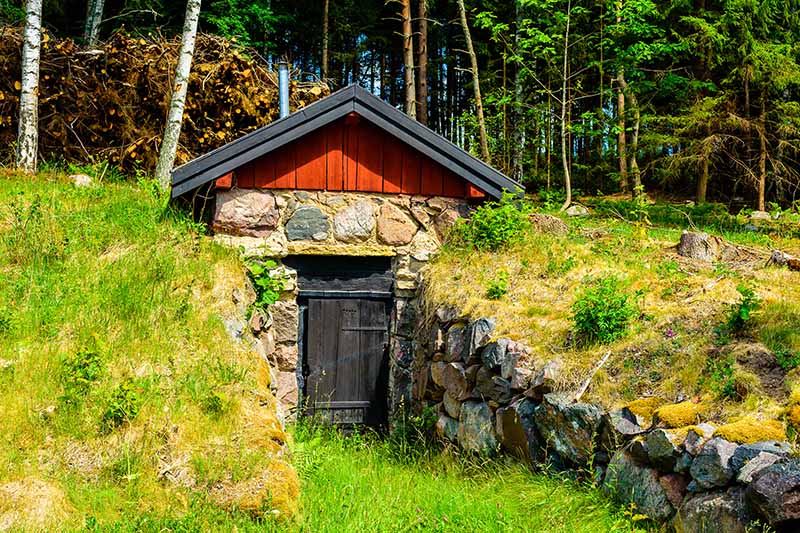
On the some other hand, if going them where they are sounds sodding, there are a few steps you'll want to take to store them with success.
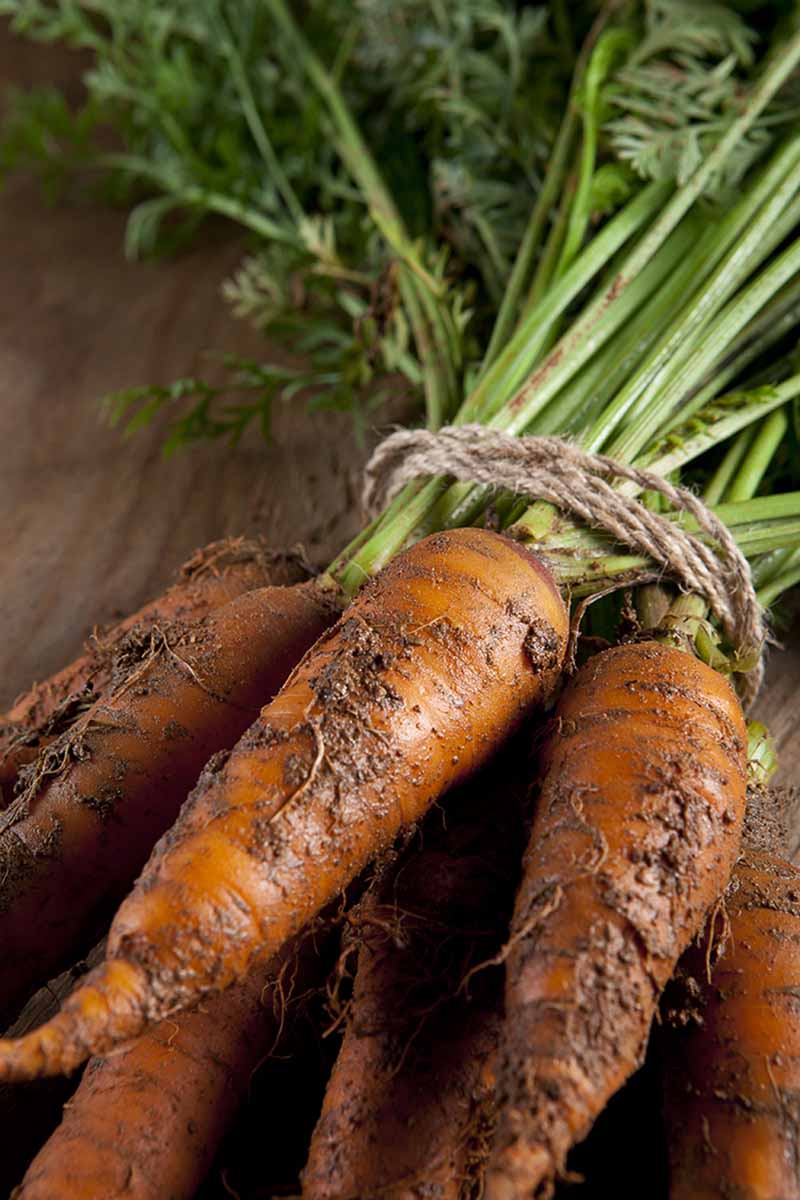
Only before you get started, you'll require to know the best time to stock your carrots for winter.
When to Put Your Cultivate to Bed
It will be time to get busy preparing your crops after you take over had a couple of frosts – which will have your carrots sweeter – but before the ground freezes.
How do you know when your basis is frozen?

According to the Southwestern Regional Climate Center, when air temperatures achieve 24°F or lower, the soil begins to freeze.
Whether the soil stays frozen and how deeply it freezes testament depend connected many factors, including "the duration and inclemency of the freeze, soil moisture, and grime type."
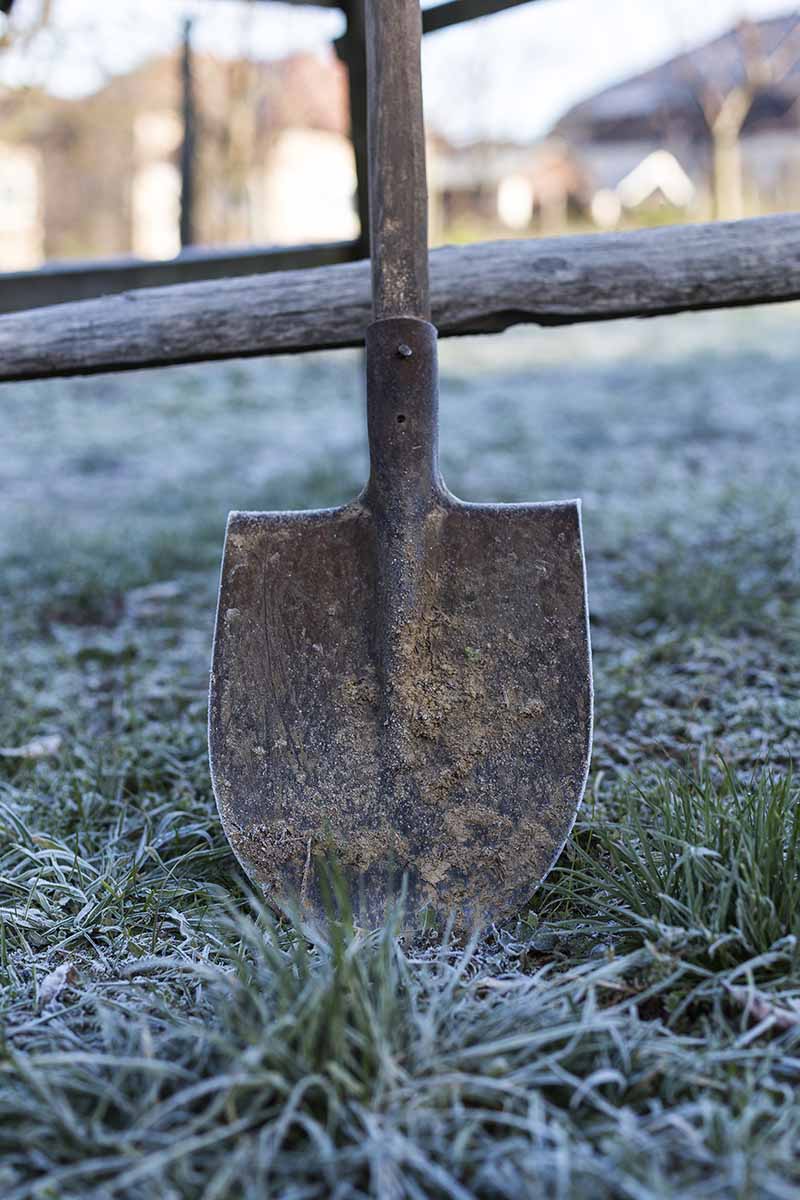
Thus don't hold off for a hard freeze, keep your eye on the weather news report, and be ready to bulge preparing your carrots after a pair off of light freezes.
To hear more about how varying degrees of cold will affect your plants, take our article on frost damage.
Mark Your Crop
Your light frosts have come and gone, and in real time you're ready to put together your carrots to layer. And for that, they'll call for covering. But before you start covering them up, there's an important step to take so that you can find exactly where they are when you are ready to harvesting them.

You leave be application them with mulch, so make trusted you have a manner of finding them once more first. Marking your carrot patch with a sign up, stick, or some other means to remind yourself that there is a prune of root vegetables there for late eating.
In my garden, I use sticks for this purpose.
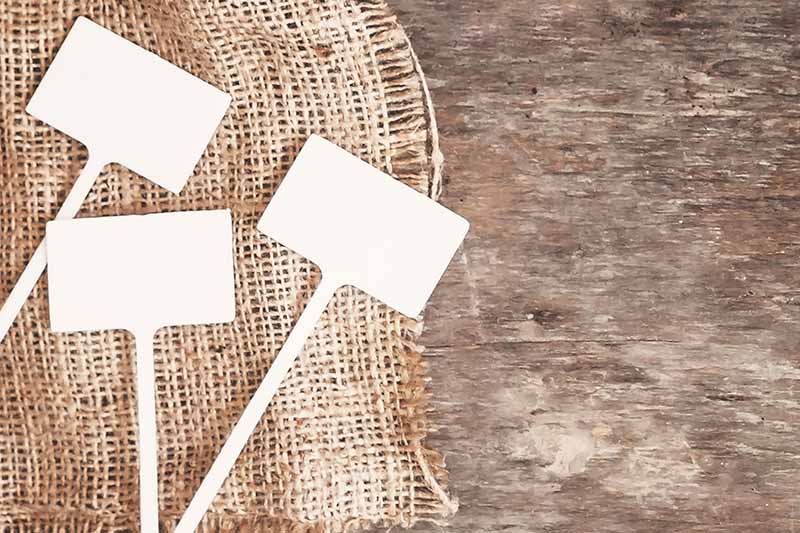
If you get tons of snow in your region, make sure your marker is long-stalked sufficiency to exceed than your expected snowfall, in case you neediness to dig about of your carrots up before the bamboozle melts.
Snip the Tops Off
After grading your beds, the next step is to shortened off the greens. There are few reasons why you should do this:
First, when cultivated carrot green are left on, they continue to draw up muscularity from the roots. This results in vegetables that are not as sweet Eastern Samoa they would deliver been otherwise.
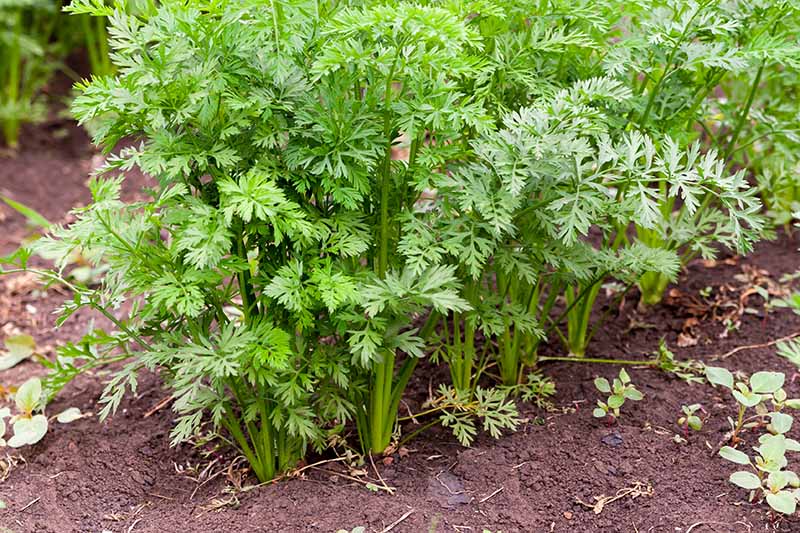
And because you are covering them, in more wet climates, your interred carrot greens will likely rot – laying waste your crop.
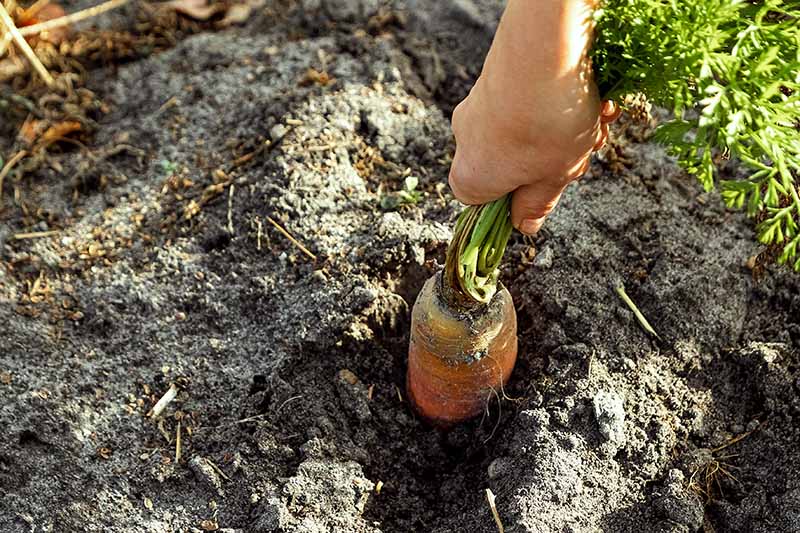
When you cut the naive tops back, leave about 1/4 to 1/2 inch of green stem intact.
Cover Your Roots
Now that you have marked your beds and trimmed off your green, you are prompt to cover your carrots.
In that location are different materials you posterior choose from to use as an insulating mulch for your harvest: straw, hay, operating room leaves. Use the material that is all but approachable to you, as you'll need quite a very much of it.
Compost, barque, woodchips, and other decorative mulches are not suitable, as the covering that we are going for here is intended to insulate, non to carry on moisture.
Make a point your mulch is dry, atomic number 3 a soggy mulch can result in a mouldy crop.

If you wish, you can add a level of soil over the cultivated carrot crowns before mulching to help insulate them.
Cover your carrots with a 12-inch-thick layer of your preferable mulch, making sure to cover the ground out to a perimeter of at least 12-18 inches either side of each plant.
Some gardeners put a row cover – or even an old bed sheet – over the top of the mulch layer to keep it from blowing forth in windy areas.
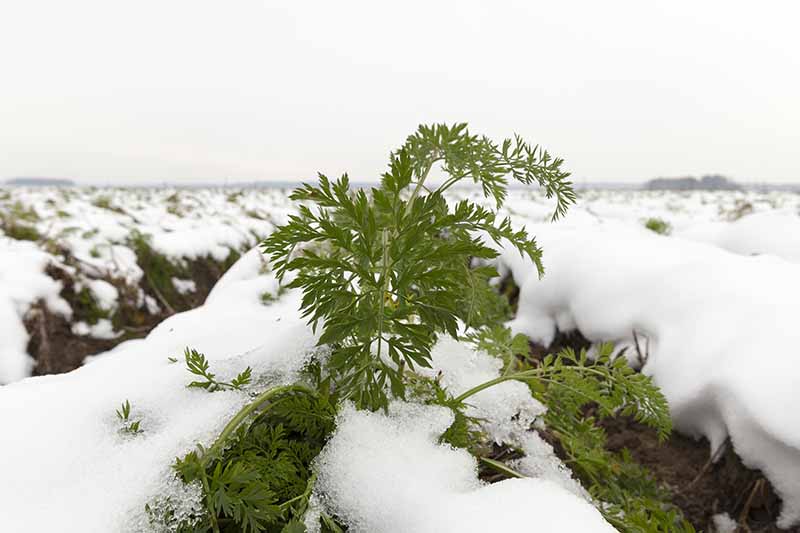
If you live in a mood where snow covers the ground for most or all of the winter, a blanket of snow can likewise provide extra insulant for your carrot beds.
Can It Be Besides Frigorific For Ground Storage?
Nigh extension offices commend harvesting carrots from the ground before the soil freezes.
So does that mean if you live somewhere where the soil freezes in winter that you cannot memory these root vegetables in the garden? Not necessarily.
Many gardeners, including Jim Hole at the Edmonton Journal, claim that well-mulched carrot patches can resist even torpedo-zero publicize temperatures.
This has besides been my personal see in USDA Hardiness Zone 5a. Conclusion year, some of my unmulched carrots survived air temperatures at least arsenic low as -16°F. These were protected aside only a layer of snow.
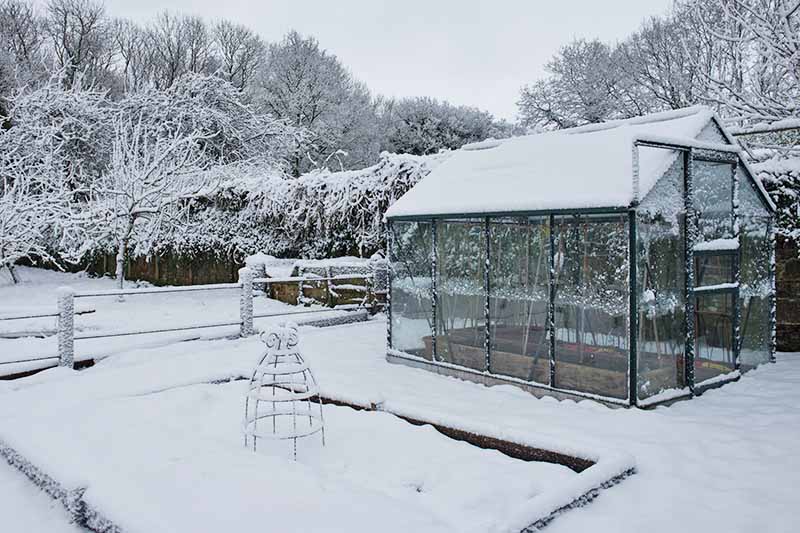
For those of us with average winter air out temperatures down the stairs 24°F – the ideal soil temperature for storage of 32-40°F – safekeeping these root vegetables in the soil is for certain worth a try when they are mulched and protected with a blanket of snowfall, even in climates where the ground is frozen throughout overwinter.
Underground, the temperature of the soil will always be slightly higher than the ambient aerate and ground temperature.
When to Harvest
If your carrot beds are well mulched, the soil in these beds should not be American Samoa cold as the encompassing soil, and you can harvest the roots passim the winter, as needed.

Unless you are overwintering your crop for sow production (a process known as vernalization), you'll want to harvest your carrots before spring, when they'll start growing again
Once spring starts, the carrots will resume sending energy into the greens, which will grow up back. Energy spent on carrot tops means less vitality saved in the roots, which volition result in a loss of redolence, and a woody and tough texture.
Leaf Them in the Ground
At present that your carrots are put to bed for the winter, their beds well pronounced, their green removed, and their roots resting sweetly under a thick insulating mulch, it's time to curl, do some winter garden planning, and dream of next year's carrot varieties.
Will you make up departure your carrots in the ground this winter? Rent the States cognize in the comments – and make sure to tell us what region you'atomic number 75 in soh that your experience can assistanc others.
For more counseling connected harvesting and storing root vegetables, check kayoed these articles side by side:
- When you said it To Harvest Native Potatoes
- How to Harvest and Store Brassica napus napobrassic
- How to Harvest and Store Sweet Potatoes
© Ask the Experts, LLC. ALL RIGHTS Withdrawn. See our TOS for more details. Uncredited photos: Shutterstock. Extra authorship and redaction by Clare Hostler and Allison Sidhu.
![]()
About Kristina Hicks-Hamblin
Kristina Hicks-Hamblin lives on a dryland permaculture homestead in the high desert of Mormon State. Originally from the temperate suburbs of Northwestward Carolina, she enjoys discovering ways to meet a climate challenge. She is a Certified Permaculture Room decorator and a Building Biology Environmental Adviser, and holds a BA degree in liberal studies from the University of North Carolina at Greensboro. Kristina loves the challenges of dryland gardening and teaching others to use climate miscible gardening techniques, and she strives towards creating gardens where in that respect are as many birds and bees Eastern Samoa there are edibles. Kristina considers it a point of pride that she spends more money on seeds each class than she does on apparel.
How Long Can Carrots Stay in the Ground
Source: https://gardenerspath.com/plants/vegetables/overwintering-carrots/

0 Response to "How Long Can Carrots Stay in the Ground"
Post a Comment